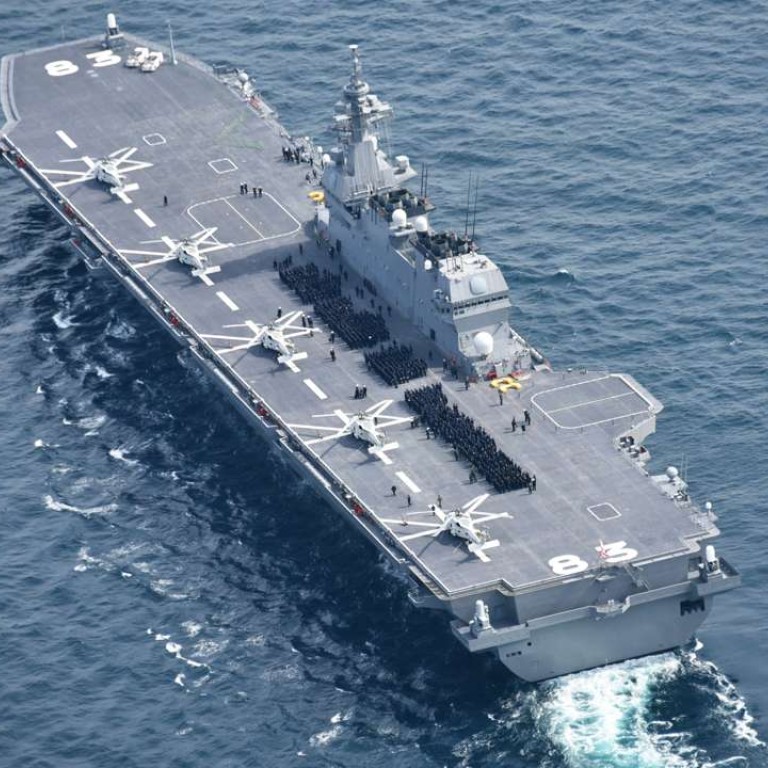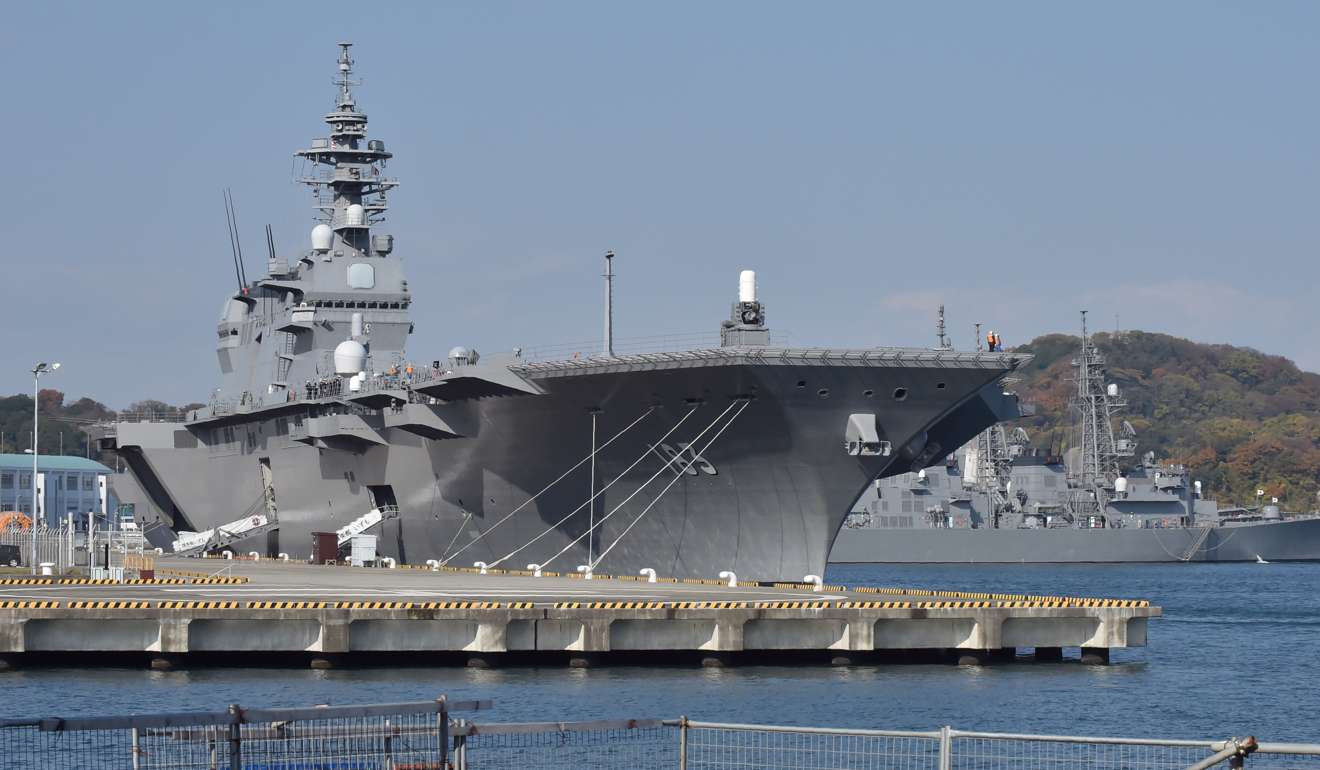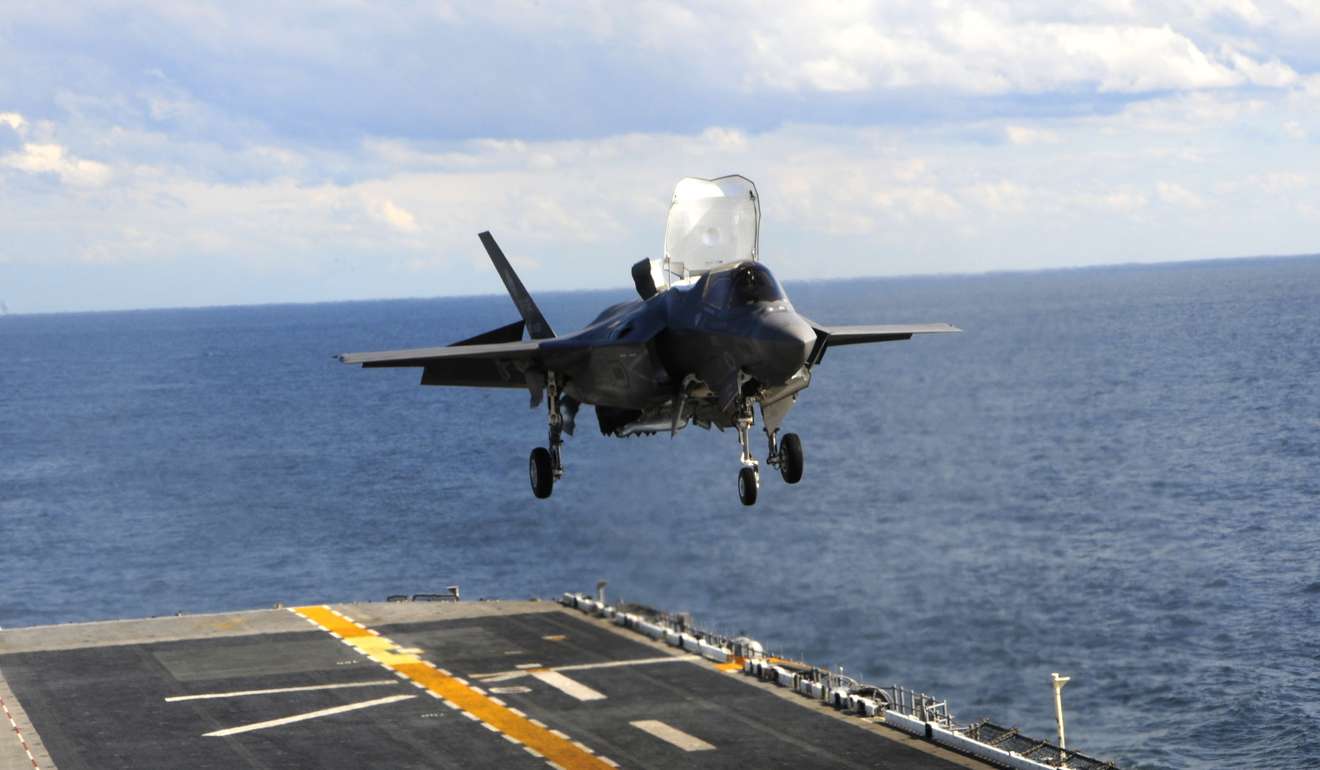
In huge show of force, Japan to send helicopter carrier Izumo to South China Sea
Japan plans to dispatch its largest warship on a three-month tour through the South China Sea beginning in May, three sources said, in its biggest show of naval force in the region since the second world war.
China claims almost all the disputed waters and its growing military presence has fuelled concern in Japan and the West, with the United States holding regular air and naval patrols to ensure freedom of navigation.

It will return to Japan in August, the sources said.
“The aim is to test the capability of the Izumo by sending it out on an extended mission,” said one of the sources who have knowledge of the plan.
“It will train with the US Navy in the South China Sea,” he added, asking not to be identified because he is not authorised to talk to the media.
A spokesman for Japan’s Maritime Self Defence Force declined to comment.
Watch: what’s happened in the South China Sea so far
Taiwan, Malaysia, Vietnam, the Philippines and Brunei also claim parts of the sea which has rich fishing grounds, oil and gas deposits and through which around $5 trillion of global seaborne trade passes each year.
Japan does not have any claim to the waters, but has a separate maritime dispute with China in the East China Sea.

Japan wants to invite Philippine President Rodrigo Duterte, who has pushed ties with China in recent months as he has criticised the old alliance with the United States, to visit the Izumo when it visits Subic Bay, about 100km west of Manila, another of the sources said.
Japan’s flag-flying operation comes as the United States under President Donald Trump appears to be taking a tougher line with China. Washington has criticised China’s construction of man-made islands and a build-up of military facilities that it worries could be used to restrict free movement.
Watch: China’s aircraft carrier conducts drills in South China Sea
Beijing in January said it had “irrefutable” sovereignty over the disputed islands after the White House vowed to defend “international territories”.
The 249 metre-long Izumo is as large as Japan’s second war-era carriers and can operate up to nine helicopters. It resembles the amphibious assault carriers used by US Marines, but lacks their well deck for launching landing craft and other vessels.

Japan in recent years, particularly under Prime Minister Shinzo Abe, has been stretching the limits of its post-war, pacifist constitution. It has designated the Izumo as a destroyer because the constitution forbids the acquisition of offensive weapons. The vessel, nonetheless, allows Japan to project military power well beyond its territory.
Based in Yokosuka, near to Tokyo, which is also home to the US Seventh Fleet’s carrier, the Ronald Reagan, the Izumo’s primary mission is anti-submarine warfare.

